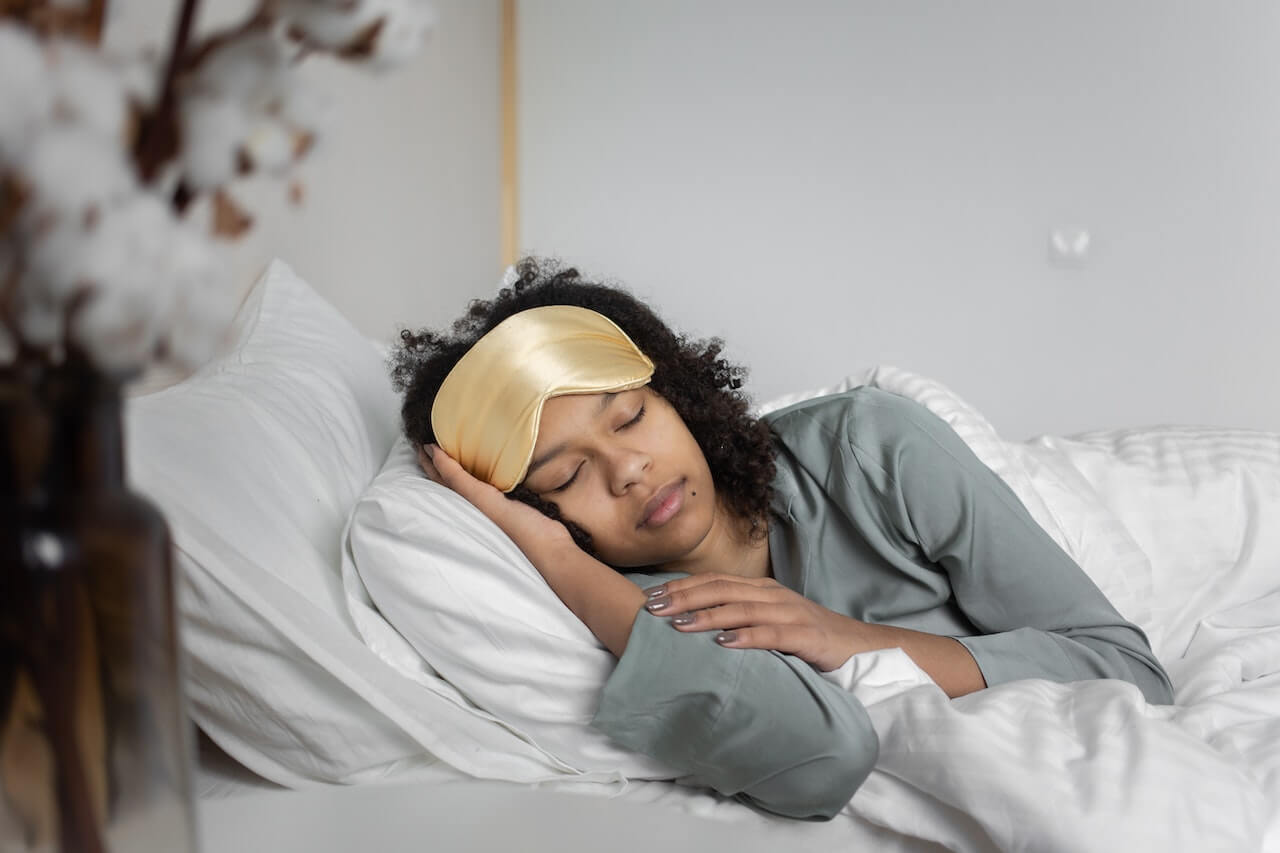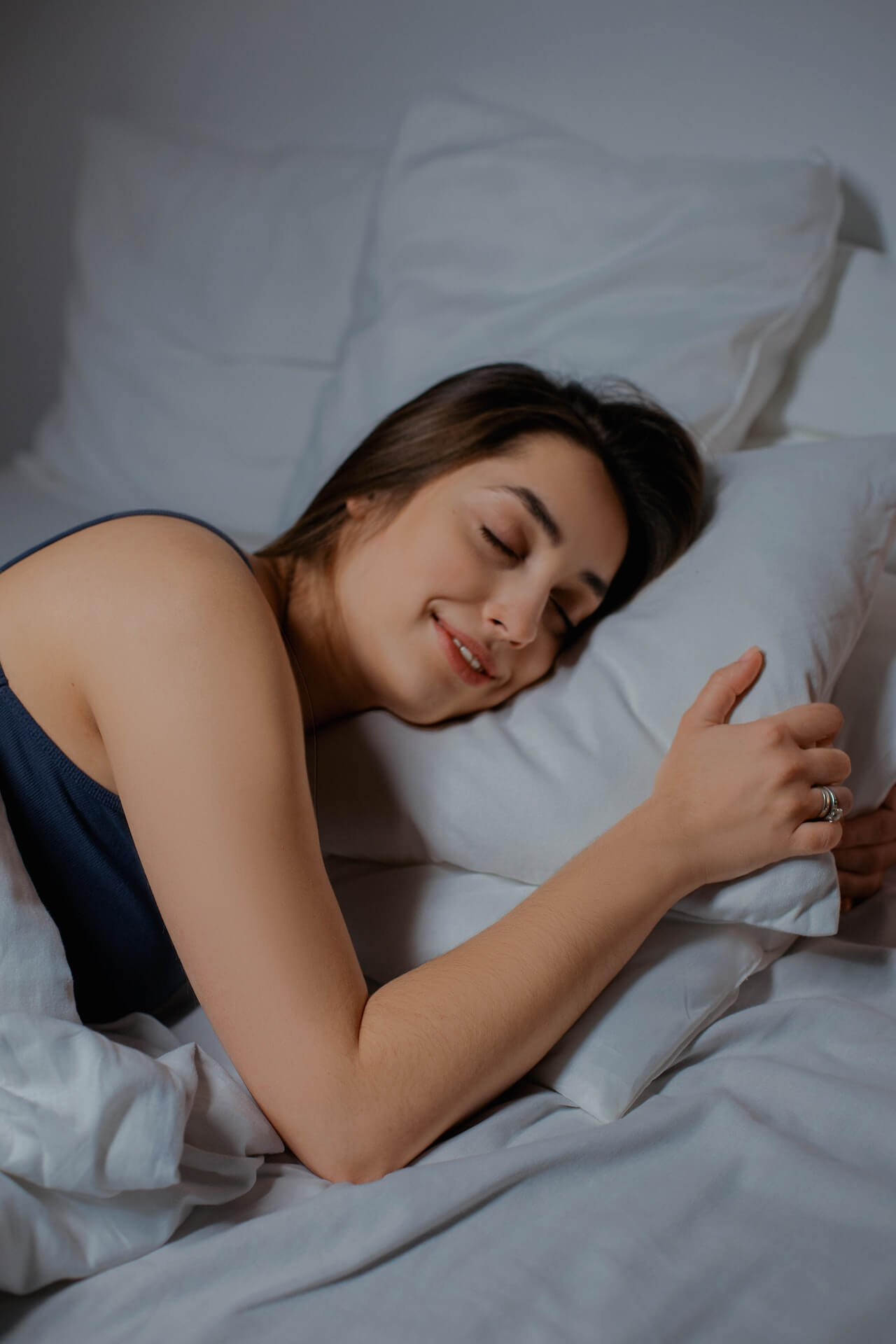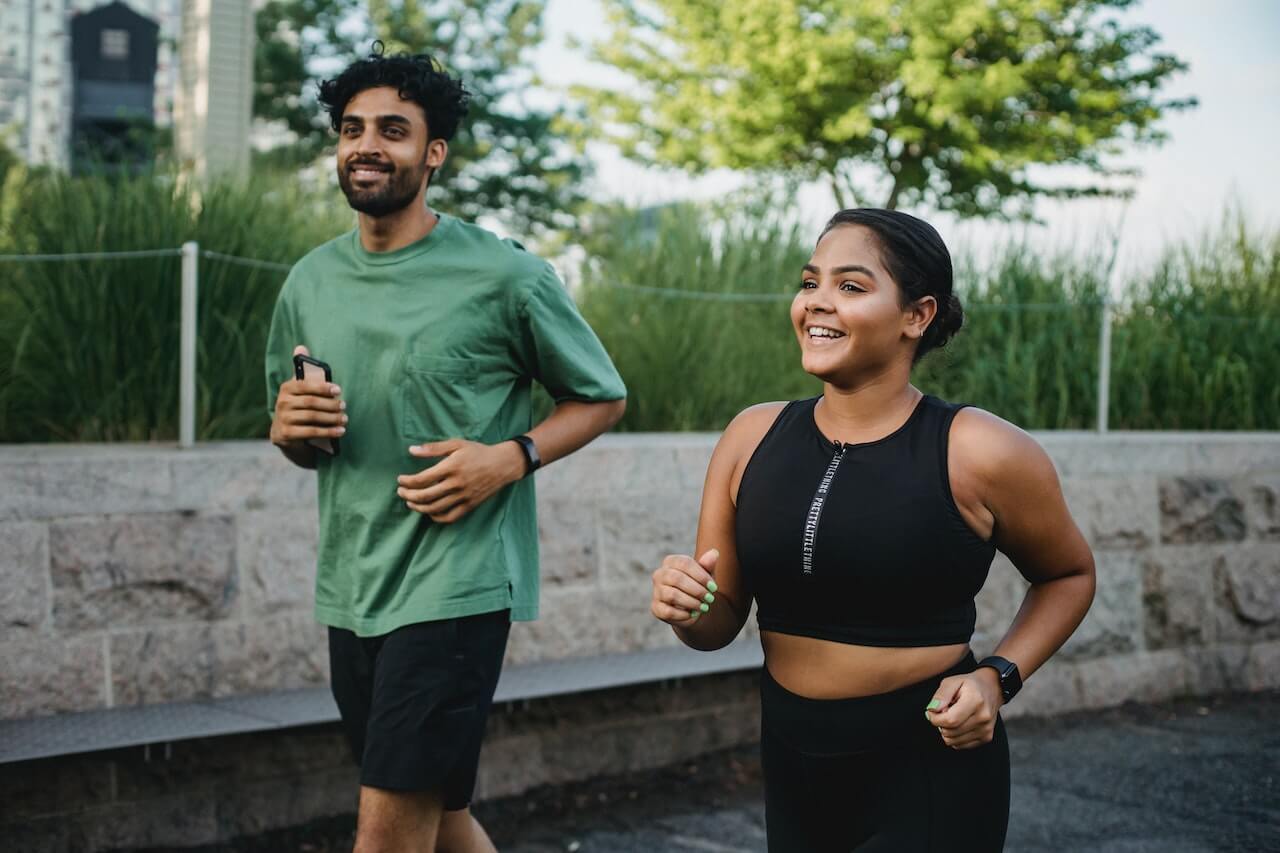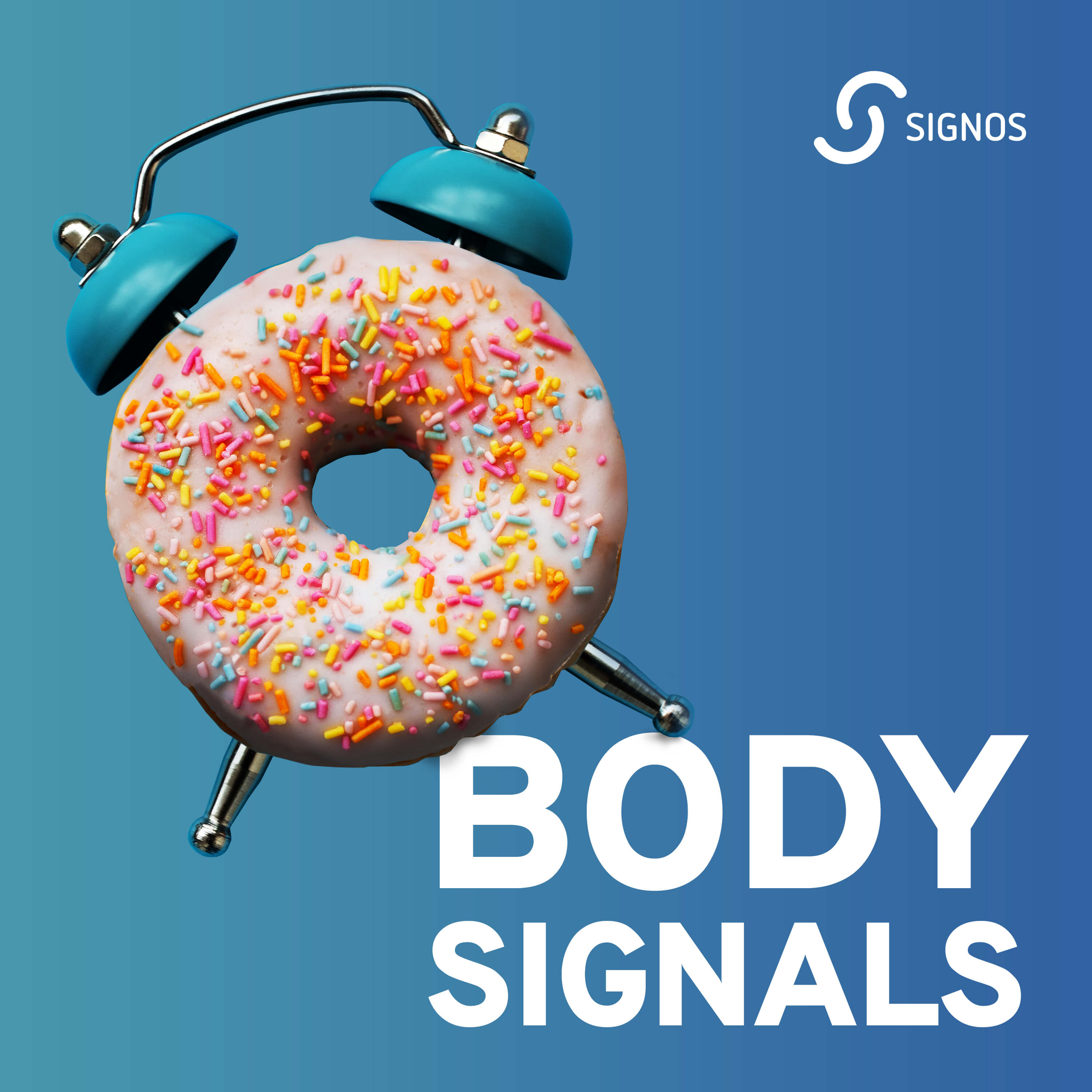It’s always refreshing to get a good night’s sleep. Rest is vital for your body to recover, heal, and strengthen. Unfortunately, it isn’t always easy to achieve. Your sleep routine might include positions that aren’t optimal for your bodily functions. Here’s what side you should sleep on and how to relieve symptoms as the body aches overnight.
Side Sleepers: Should You Sleep on Your Left or Right Side?
You need to feel comfortable when falling asleep, which means finding the best sleeping position for your body. You might wonder if side sleeping is more effective at helping you fall asleep and stay that way if you’re tired of lying on your back.
There’s no need to worry about which side you should sleep on. Either can be effective and provide extra benefits for your well-being. The numerous advantages and optional positioning make it one of the best sleep positions for people of all ages.
{{mid-cta}}
Benefits of Side Sleeping
Whether you have neck pain or are a heavy snorer, resting on your side could be more helpful than sleeping on your back. Figure out what side you should sleep on by comparing the benefits of both options. Also, many side sleepers choose a fetal position to sleep in, with their legs bent and curled in toward the chest. This position can relieve back pressure, but curling up too tight in this position can make it more difficult to breathe, so be mindful of your leg positioning.
Left-Side Sleeping Benefits
You might feel better after sleeping on your left side in a few ways. It’s the most recommended position due to its immediate and long-term positive effects, like providing back pain relief.
When you sleep on your back, the lower portion of your spine naturally arches. The arch may become more pronounced on a firmer mattress. You may have lower back pain from this position, but sleeping on your left side relaxes your spine. It also provides the lumbar stabilization you might need if you’re an active sleeper who tenses your muscles during dreams.1
Additionally, side sleepers may reduce or eliminate their snoring. Your neck won’t strain backward with the force of gravity like it does when you lie on your back. Instead, it gently rests on its side. Your airways will remain wider, making breathing easier. You might also have less neck pain with reduced strain on your spine and neck muscles.
Give yourself an extra boost by propping yourself up on two firm pillows. The additional height opens the airways, so snoring and sleep apnea issues don’t interfere with your rest.2
Sleeping on your left side may also relieve some stomach pains. The stomach leans to the left between the small intestine and the esophagus.3 Lying on that side helps the contents settle so trapped gas rises. Spending a few minutes on your left side allows it to move more easily through your small intestine.
Going to sleep without gut pain could help you finish the 100-minute first sleep cycle, which morphs into the deeper second cycle if you can stay asleep.4 It’s something to consider if stomach pain keeps you awake or makes you wake up before you get a chance to enter the deeper phases of your nightly rest.
Who Should Sleep on Their Left Side?
The best sleeping position is whichever makes you most comfortable. Pregnant women often find that it decreases their back pain. Instead of placing the weight of pregnancy on their spine, the mattress cradles their belly while the spine enjoys a weightless sleep.
Sleeping on your left side could also make your nightly heartburn more manageable. If stomach acid escapes your esophagus, lying on your left will encourage the acid reflux to slide back where it needs to be.5 Gravity may be the extra support your gastroesophageal reflux disease (GERD) needs in addition to any prescribed or recommended medications.
Your tongue and soft palate press back against your throat when sleeping on your back. It causes some individuals to snore, but sleeping on your left side prevents this. It’s worth a try, along with elevating your pillow, if other sleep positions haven’t helped in the past.
Individuals with high blood pressure may also find some relief in left-side sleeping. Blood flows through the superior vena cava and inferior vena cava on the right side of the heart.6 The blood won’t enter those veins as easily lying on your left side because less pressure forces less blood through.
People with digestive issues could try left-side sleeping since it relieves gas and acid reflux symptoms. Rotating between side and back sleeping could also shift gas around if it doesn’t resolve itself quickly. GERD or recurring reflux sufferers should wait three hours after a meal to reduce their chance of heartburn.

Right-Side Sleeping Benefits
Sleeping on your right side can also improve your well-being. It’s especially helpful if you rotate between your left and right side while falling asleep, as you’ll benefit from both.
Research shows that the right lateral sleeping position proves more efficient at removing cellular waste from your brain.7 This may contribute to developing neurological diseases if it builds up alongside brain tissue.
Pregnant women may also enjoy sleeping on their right side. Low blood pressure can occur due to the growing fetus needing more oxygen. If symptoms arise at night, sleeping on your right side will make gravity force more blood into the veins, pumping it into your heart. This could increase your blood pressure to a normal level, but monitor it closely and work with your doctor if you have any questions.
Individuals with heart conditions could try sleeping on their right side, but finding the best position for their body is most important. An irregular sleep schedule could make you twice as likely to develop or worsen a sleep condition.8 Falling asleep more easily will also prevent other habits that could deteriorate your cardiovascular health, like eating junk food every night when you can’t rest.
Who Should Sleep on Their Right Side?
You’ll find the best sleeping position for your body with practice, but certain people may want to start with their right side instead of their left. Those with heart conditions could benefit from improved blood flow due to gravity on their right side. Your left side will likely be more beneficial if you experience nightly heartburn due to the placement of the esophagus above the stomach.
Pregnant individuals will benefit from resting on their right and left sides. What’s most important is that you’re comfortable. However, sleeping on your right side provides additional benefits alongside increased blood flow to your fetus. It can also improve your pain tolerance if it helps you sleep longer. REM sleep reduces nervous system inflammation, which causes more pain sensitivity.
People with sleep apnea will also find relief when they become side sleepers. It’s the best sleeping position to keep your airways open, as it prevents the tongue and soft palate from collapsing backward.
Nightly neck pain could disappear with right-side sleeping. The weight of your head and the strain on your neck from your lower body would disappear. Gravity would pull it all sideways, allowing your neck muscles to rest easily.
What About Sleeping on Your Back or Stomach?
You shouldn’t worry about changing your resting positions if you are a back sleeper or feel comfortable sleeping on your stomach. A supportive mattress and pillow will align your spine as you sleep on your back. Your face won’t push against your pillow, which may prevent wrinkles.
Stomach sleeping is an excellent option for those with obstructive sleep apnea or snoring challenges. The tongue and soft palate will fall forward, so there’s less risk of your airways closing.
If you are a stomach sleeper, be aware that resting on your stomach will put pressure on your spine by lifting your head against the pillow. Researchers found increased neck, back, and shoulder pain when study participants slept this way.8
Side sleeping could be more comfortable for your body if those are your most frequent nightly challenges. Lying on your side will also be more comfortable if putting pressure on your organs keeps you awake.
What Is the Best Sleeping Position?
Numerous factors influence the best sleeping position for your body. Consider your existing health conditions, your current sleep quality, and which position your body is in when you wake up.
Side sleeping best practices include keeping your ears in line with your shoulders, while the chin stays in a neutral position. Avoid tucking your chin into your chest or keeping your head down. While you may shift during sleep, this initial posture check can help with breathing smoothly throughout the night.
Strategizing which position you’re in when falling asleep may reduce your chances of back and neck pain or other negative symptoms. Chat with your doctor to see what’s best for you if you’re unsure where to start.

A Good Night Sleep: 6 Sleeping Best Practices
You can improve your odds of restful nights by combining the position with these best sleeping practices. See how many you already do and which you could use to improve your nightly routine.
1. Maintain a Consistent Sleep Schedule
Whether you sleep on your left or right side, make the best position a long-term habit. Consistency is key to better rest. Neural networks promote habit formation, so falling asleep will be easier when your routine feels familiar and calming.9
2. Prepare Your Bedroom for Sleep
Change your bedroom if you need extra help sleeping. Light-blocking curtains could remove the moonlight or street lights that keep you awake.
It may also help to set your thermostat lower an hour before bed. Researchers found that allowing the body to cool before resting through the night enhances the circadian sleep cycle.10
3. Adopt Healthier Sleep Habits
A healthier sleep routine doesn’t begin in your bedroom. It starts in your kitchen. Consider what you eat at night and when you have your last meal of the day. Replacing junk food with options like almonds or nut butter will provide fatty acids your brain uses to soothe itself into a calmer state.
Anyone needing help sleeping should reflect on their diet and consider removing unhealthy foods that might keep them up, like sugary desserts or caffeinated beverages in the afternoon. A nutritionist could assist with your dietary changes so you’re not cutting out anything your body needs to thrive.
4. Switch Sides Overnight
Your brain might panic if you go from sleeping on your back to only sleeping on one side. You could feel stuck in one position and experience anxiety that keeps you awake. Remember to accept that you’ll switch sides throughout the night. Finding what works for your body and reducing your stress before bed is important.
5. Keep Your Arms and Hands Below Your Face and Neck
It may feel relaxing to stretch your arms above your head and fall asleep, but it’s not great for your body. Blood gets trapped in your limbs, leading to a tingly sensation before they go numb. The best sleeping position will improve your blood flow, so keep your hands and arms below your neck to ensure your whole body gets oxygen until morning.
6. Choose the Right Mattress
Resting on your right side won’t matter if your old mattress makes you uncomfortable. Consider when you last replaced your mattress to determine if it’s time for a new model.
You’ll spend 2,555 hours on your mattress yearly if you get the recommended seven hours of sleep every night.11 It will get lumpy due to innerspring malfunctions and long-term weight distribution.
Try replacing your mattress if it has a significant indentation where you rest or noticeable springs pushing through the cushioning. Most mattress companies offer trial periods which will allow you to find the best mattress for your particular needs. You’ll also find the best sleeping position for your body more easily if your mattress can support your body evenly.
Another thing to consider is your pillow quality, especially if you still experience poor sleep quality after making some changes. Firmer pillows or a body pillow may offer more support and allow you to feel more comfortable when falling asleep. However, check with your healthcare provider if you continue to have chronic pain issues despite changes.

Learn More About How to Improve Your Health With Signos’s Expert Advice
After reflecting on your health history and sleep needs, you’ll know what side you should sleep on. Try them all to find what your body prefers. Sleeping on the left or right side could improve your nightly routine. It’s an important step to take on your journey to improved health.
Signos’s experts can help if you’re ready to learn more about creating a better lifestyle. They have experience assisting people with dietary changes, weight loss goals, and other objectives to improve their well-being.
You can also read the latest posts on Signos’s blog to learn more about healthy habits and better nutrition. When you’re ready to take the next step, this quick quiz will point you toward the most useful resources, like the Signos continuous glucose monitor (CGM) and the expert health team waiting to assist you.
- Item 1
- Item 2
- item 3
Topics discussed in this article:
References
- Suh, J. H., Kim, H., Jung, G. P., Ko, J. Y., & Ryu, J. S. (2019, June). The Effect of Lumbar Stabilization and Walking Exercises on Chronic Low Back Pain: A Randomized Controlled Trial. Medicine. https://www.ncbi.nlm.nih.gov/pmc/articles/PMC6616307/
- Danoff-Burg, S., Rus, H. M., Weaver, M. A., & Raymann, R. J. E. M. (2022, April 6). Sleeping in an Inclined Position To Reduce Snoring and Improve Sleep: In-Home Product Intervention Study. JMIR formative research. https://www.ncbi.nlm.nih.gov/pmc/articles/PMC9021938/
- Encyclopædia Britannica, inc. (2023, June 29). Stomach. Encyclopædia Britannica. https://www.britannica.com/science/stomach
- Sleep Is Sleep, Right?. Kemin North America. (2021, April 20). https://www.kemin.com/na/en-us/blog/human-nutrition/sleep-is-sleep-right
- Schuitenmaker, J. M. (2022, March 14). Sleep Positional Therapy for Nocturnal Gastroesophageal Reflux: A Double-Blind, Randomized, Sham-Controlled Trial. Clinical Gastroenterology and Hepatology. https://www.sciencedirect.com/science/article/pii/S1542356522002476
- U.S. Department of Health and Human Services. (n.d.). How Blood Flows Through the Heart. National Heart Lung and Blood Institute. https://www.nhlbi.nih.gov/health/heart/blood-flow
- Reddy, O. C., & van der Werf, Y. D. (2020, November 17). The Sleeping Brain: Harnessing the Power of the Glymphatic System Through Lifestyle Choices. Brain sciences. https://www.ncbi.nlm.nih.gov/pmc/articles/PMC7698404/
- Cary, D., Briffa, K., & McKenna, L. (2019, June 28). Identifying Relationships Between Sleep Posture and Non-Specific Spinal Symptoms in Adults: A Scoping Review. BMJ open. https://pubmed.ncbi.nlm.nih.gov/31256029/
- Smith, K., & Graybiel, A. (2022, April 1). Habit Formation. Taylor & Francis Online. https://www.tandfonline.com/doi/full/10.31887/DCNS.2016.18.1/ksmith
- Harding, E. C., Franks, N. P., & Wisden, W. (2019, March 22). The Temperature Dependence of Sleep. Frontiers. https://www.frontiersin.org/articles/10.3389/fnins.2019.00336/full
- Ramar, K. (2021, October 1). Sleep Is Essential to Health: An American Academy of Sleep Medicine Position Statement. Journal of Clinical Sleep Medicine. https://jcsm.aasm.org/doi/10.5664/jcsm.9476
































